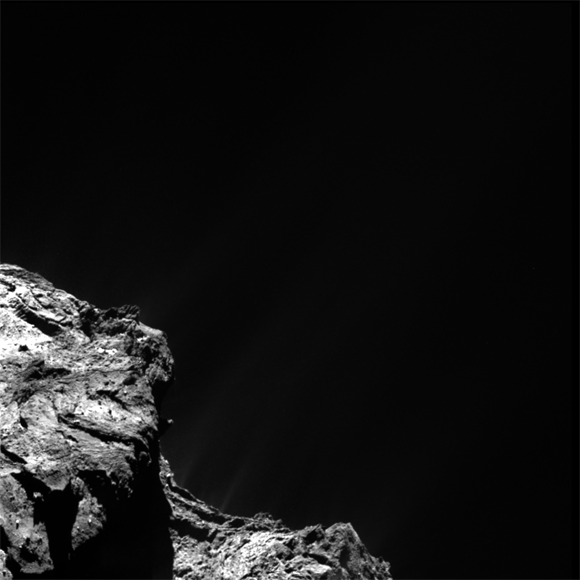
The image at left was taken at 13:06 Greenwich Mean Time (GMT) (6:06 a.m. PDT), and does not show any visible signs of the jet. It is very strong in the middle image captured at 13:24 GMT (6:24 a.m. PDT). Residual traces of activity are only very faintly visible in the final image taken at 13:42 GMT (6:42 a.m. PDT). The images were taken from a distance of 116 miles (186 kilometers) from the center of the comet. The jet is estimated to have a minimum speed of 33 feet per second (10 meters per second) and originates from a location on the comet’s neck. Credit: ESA/Rosetta/MPS
A new set of images from the European Space Agency’s Rosetta spacecraft shows a short-lived outburst from comet 67P/Churyumov–Gerasimenko.
The European Space Agency’s Rosetta spacecraft has been witnessing growing activity from comet 67P/Churyumov–Gerasimenko as the comet approaches perihelion (its closest point to the sun during its orbit). On July 29, while the spacecraft orbited at a distance of 116 miles (186 kilometers) from the comet, it observed the most dramatic outburst to date. Early science results collected during the outburst came from several instruments aboard Rosetta, including the Double Focusing Mass Spectrometer (DFMS), which uses NASA-built electronics. The DFMS is part of the spacecraft’s Rosetta Orbiter Spectrometer for Ion and Neutral Analysis (ROSINA) instrument.
When the outburst occurred, the spectrometer recorded dramatic changes in the composition of outpouring gases from the comet when compared to measurements made two days earlier. As a result of the outburst, the amount of carbon dioxide increased by a factor of two, methane by four, and hydrogen sulfide by seven, while the amount of water stayed almost constant.
“This first quick look at our measurements after the outburst is fascinating,” said Kathrin Altwegg, principal investigator for the ROSINA instrument from the University of Bern, Switzerland. “We also see hints of heavy organic material after the outburst that might be related to the ejected dust.
“But while it is tempting to think that we are detecting material that may have been freed from beneath the comet’s surface, it is too early to say for certain that this is the case.”
A sequence of images taken by Rosetta’s scientific camera OSIRIS shows the sudden onset of a well-defined, jet-like feature emerging from the side of the comet’s neck. The jet, the brightest seen to date, was first recorded in an image taken at 6:24 a.m. PDT (9:24 a.m. EDT, 13:24 GMT) on July 29, but not in an image taken 18 minutes earlier. The jet then faded significantly in an image captured 18 minutes later. The OSIRIS camera team estimates the material in the jet was traveling at 33 feet per second (10 meters per second), at least.
On Thursday, August 13, the comet and Rosetta will be 116 million miles (186 million kilometers) from the sun – the closest to the sun they will be in their 6.5-year orbit. In recent months, the increasing solar energy has been warming the comet’s frozen ices – turning them to gas – which pours out into space, dragging dust along with it. The period around perihelion is scientifically very important, as the intensity of the sunlight increases and parts of the comet previously cast in years of darkness are flooded with sunlight. The comet’s general activity is expected to peak in the weeks following perihelion.
Comets are time capsules containing primitive material left over from the epoch when the sun and its planets formed. Rosetta’s lander, Philae, obtained the first images taken from a comet’s surface and will provide analysis of the comet’s possible primordial composition. Rosetta is the first spacecraft to witness at close proximity how a comet changes as it is subjected to the increasing intensity of the sun’s radiation. Observations are helping scientists learn more about the origin and evolution of our solar system and the role comets may have played in seeding Earth with water, and perhaps even life.

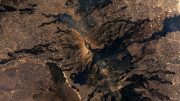
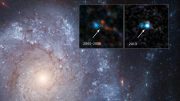
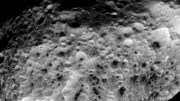
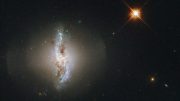
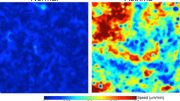


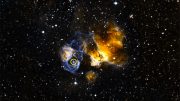
Be the first to comment on "Rosetta Spacecraft Views an Outburst from Comet 67P"